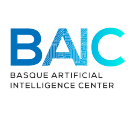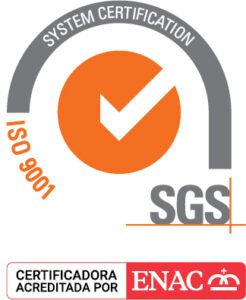SATLANTIS has enhanced its GEISAT Precursor satellite by integrating Dotphoton’s Jetraw Core compression technology through a remote firmware upgrade completed in April 2024.
Unlike many traditional compression methods, Jetraw Core preserves critical image fidelity and full real resolution, enabling more robust results with modern AI image processing pipelines. This advancement has tripled the satellite’s image acquisition capabilities and expanded its daily surface coverage to an impressive 175,000 km², significantly boosting performance and setting new benchmarks in Earth observation. The successful implementation demonstrates the maturity of Dotphoton‘s innovative technology in real-world applications showcasing how cutting-edge compression can enhance satellite efficiency while preserving data quality essential for advanced AI analysis, combined with SATLANTIS’ advanced optical technology, which delivers high-resolution imagery at a fraction of the mass and size. This synergy significantly boosts satellite performance while contributing to more sustainable space-based EO solutions.
GEISAT Precursor – advanced environmental monitoring with high spatial resolution
In June 2023, SATLANTIS launched its fourth mission, GEISAT Precursor, offering extensive environmental monitoring, contributing to the understanding and mitigation of other greenhouse gas (GHG) emissions by processing and delivering high-quality visual imagery with very high spatial resolution for accurate data capture. The satellite allows the monitoring of infrastructure across various sectors, including oil and gas, biogas, landfills, and power infrastructure, targeting the main contributors to methane emissions: agriculture, fossil fuels, among others.
The GEISAT satellite features the iSIM-90 VNIR SWIR camera, providing high-resolution Earth observation capabilities. The payload includes two optical channels: one for the visible and near-infrared (VNIR) spectrum and another for the short-wave infrared (SWIR) spectrum, allowing it to acquire simultaneously in both spectral ranges. The camera offers a spatial resolution of 2 meters in the visible and near-infrared bands and 5 meters in the short-wave infrared while 13 meters are provided for the methane data products, doubling the resolution of similar satellites.
In 2023, GEISAT Precursor was selected to join the Copernicus Programme, the Earth observation component of the European Union, as Emerging CCM Category 1 for Atmospheric Composition domain, supporting global efforts to monitor and analyse the Earth’s atmosphere. The programme is managed by the European Commission and implemented in partnership with the European Space Agency, the Members States, and other European Agencies and research centres.
Jetraw Core – advanced compression preserving critical image details for AI and human vision
Jetraw Core is an image and video compressor engineered to meet the needs of mission-critical AI-powered applications. Unlike other compressors labelled as “visually lossless” — which often remove image information not noticeable to the human eye but crucial for machine analysis— Jetraw preserves all fine details, including those hidden within image noise. While the compressed images remain perfectly clear and detailed to the human eye, modern AI algorithms can leverage the retained subtle information to enhance system performance beyond human visual capabilities. Thanks to the support of the European Space Agency (ESA), Jetraw Core has been implemented as a low-power, low-latency, high-throughput hardware design with the amenities needed to be deployed in space applications, supporting most sensor types, panchromatic, bayer, multispectral and hyperspectral. Jetraw is a solution that works with extreme performance in both hardware and software and optimises the image data path at several points: from camera to memory, from satellite to ground, to cloud storage and GPU for efficient training of neural networks.
In SATLANTIS’s unique processing workflow, super-resolution is a key component. Unlike ‘visually lossless’ compression technologies, Jetraw Core doesn’t introduce artefacts, bias or filtering, making it perfectly suited for this application, where it achieves a typical compression ratio of 6:1, a significantly better number than alternatives.
More data, cheaper, faster — 3 to 4x – Using Jetraw Core, SATLANTIS boosted data throughput, achieving a 300% to 400% increase in image acquisition. This enhancement allows SATLANTIS to acquire a significantly larger number of images, from which they can select the highest-quality ones, improving the overall dataset quality. The reduced image size also lowers bandwidth requirements, enabling faster and more cost-effective downlink. This flexibility allows SATLANTIS to optimise bandwidth and throughput for mission success. As a result, they can now download 55,000 frames daily, up from 15,000.
Increased daily coverage — 3.5x – GEISAT has significantly expanded its coverage, increasing from 54,000 km² per day—about the size of a small country like Switzerland—to 175,000 km² per day, comparable to adding England. To further illustrate this growth, the coverage area has expanded from approximately 7.5 million football pitches to 24.5 million. Such coverage expansion greatly enhances its monitoring capabilities.
Increased on-board storage & safety margin – Jetraw Core has significantly boosted GEISAT’s storage capabilities, allowing it to store imagery covering up to 500,000 km² (a large country like Spain). This maximises satellite’s ability to capture and retain more data, preventing data losses when the downlink is not sufficient to offload the entire data, and allowing SATLANTIS to download the best and most relevant images from a large pool of available data.
Lower km² carbon footprint ~ 3x – SATLANTIS now emits 3x less CO2 per square kilometer of satellite imagery, a significant upgrade that enhances the sustainability of its operations with respect to the CO2 budget of its initially planned emissions. This improvement aligns with the broader goal of delivering satellite data on our planet and its environment in a more sustainable manner, benefiting all users.
Fast, no-compromise benefits – GEISAT’s ability to be updated in orbit allowed the fast deployment of Jetraw Core, providing all-round benefits in performance, coverage, costs, and CO2 emissions.
SATLANTIS and Dotphoton collaboration, a transformative technology for Earth Observation
Integrating Jetraw Core compression technology into SATLANTIS’ GEISAT mission marks a significant advancement for the space industry. By optimising satellite operational efficiency and enhancing the quality of data transmitted to Earth, this collaboration sets new benchmarks in Earth observation.
José Achache, chairman of Dotphoton and former architect of the Copernicus Programme, ESA’s Earth Observation programme, shared:
“The demand for higher spatial and spectral resolution in Earth observation results in overwhelming and costly data volumes. We’re tackling this by incorporating Jetraw Core raw image compression into next-generation satellites, ensuring uncompromised image quality. Dotphoton’s technology enhances data quality for AI analysis, improves efficiency, and promotes a more sustainable approach to space imagery. We’re proud to advance Earth observation through this collaboration with a forward-thinking company like SATLANTIS.”
Aitor Conde, Chief Technology Officer at SATLANTIS, comments:
“We continuously push the boundaries of innovation in Earth observation, and integrating Jetraw’s advanced compression technology into our GEISAT innovative mission is another example of this commitment. By leveraging Jetraw, we not only maximize the efficiency of our satellites but also deliver more high-resolution data to our clients and operators without compromising the image quality. This collaboration strengthens our ability to set new industry standards, ensuring that SATLANTIS remains at the forefront of sustainable, next-generation space imagery, empowering the future of Earth monitoring.”
Related news:
ESA Technology Broker Spain





















